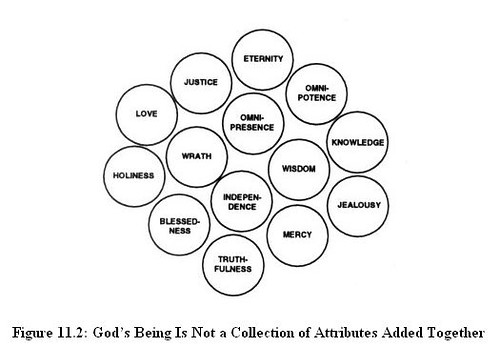When Scripture speaks about God’s attributes it never singles out one attribute of God as more important than all the rest. It seems that every attribute is completely true of God and is true of all of God’s character. In 1 John 1.5, John can say that “God is light” and just a little later say also that “God is love” (1 John 4:8). Scripture does not suggest that part of God is light and part of God is love, or that God is partly light and partly love, nor that that God is more light than love or more love than light. Instead it is God himself who is light, and it is God himself who is also love.
Exodus 34:6–7 provides a similar list of characteristics. The Lord passed before him and proclaimed, “The Lord, the Lord, a God merciful and gracious, slow to anger, and abounding in steadfast love and faithfulness, keeping steadfast love for thousands, forgiving iniquity and transgression and sin, but who will by no means clear the guilty, visiting the iniquity of the fathers upon the children and the children’s children, to the third and the fourth generation.” This does not mean that these attributes are only characteristic of some part of God, instead they are characteristic of God himself and therefore characteristic of all of God.
Using these simple graphics, Wayne Grudem depicts that God should not be thought of as a collection of characteristics.

Nor should the characteristics of God be thought of as additions to His real being.

I find it more helpful and correct to understand this as God’s unity. Grudem tries to flesh this out in the following two diagrams. In the first, assume that the horizontal lines represent the attribute of love, and that the vertical lines represent the aspect of God’s justice.

Next imagine the diagonal lines going from upper left to lower right as representing God’s holiness and the diagonal lines going from upper right to lower left as representing God’s wisdom.

This could go on to cover all each of the different attributes of God. But it should be clear that each attribute is simply a way of describing one aspect of God’s total character or being. God himself is a unity a unified and completely integrated whole person who is infinitely perfect in all of these attributes.
God reveals the various aspects of His nature separately and over time simply for our benefit, i.e., due to our inability to fully grasp even one at a time. These should never be set in opposition to one another, they are just different ways of looking at the totality of God’s character. We should not see God as loving at one point and wrathful at another. He is always the same God and He is fully consistent within Himself.
It would be untrue to God Himself to elevate one characteristic above the other.

No comments:
Post a Comment